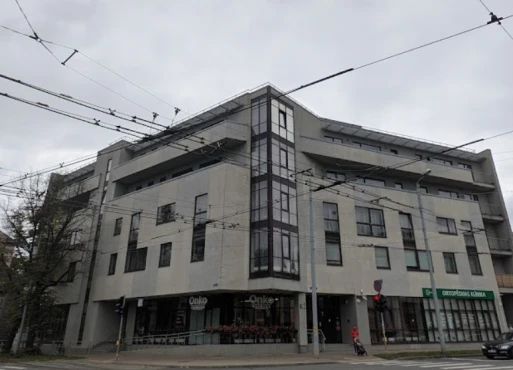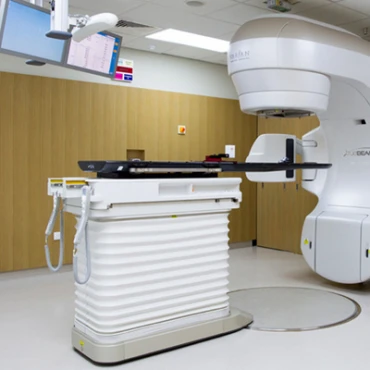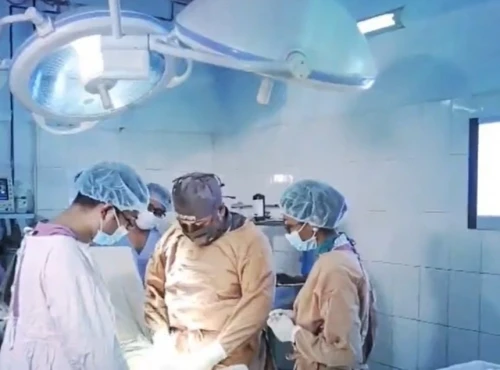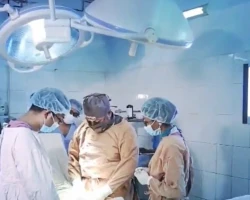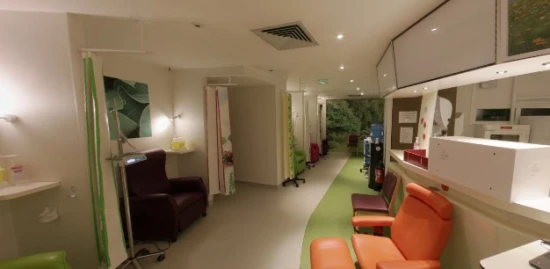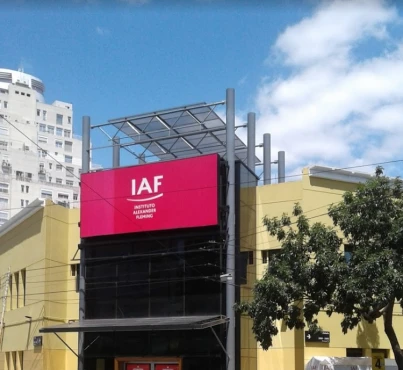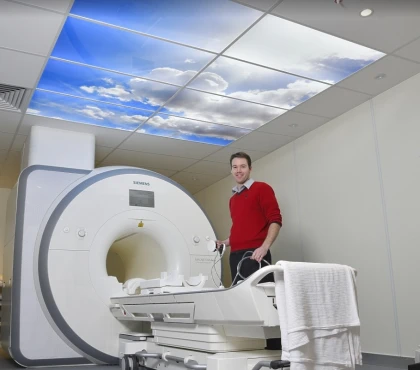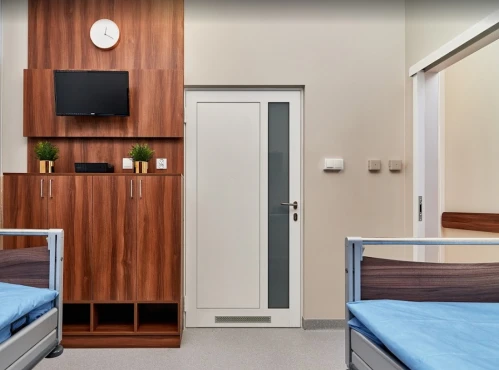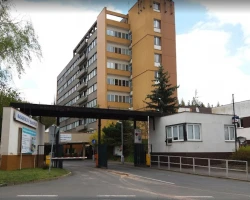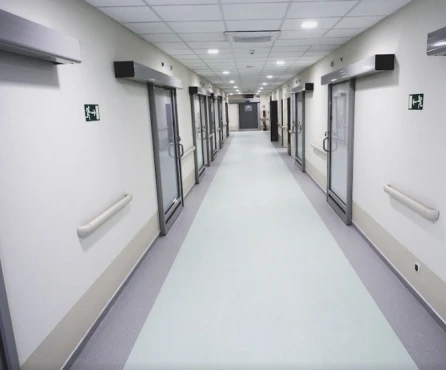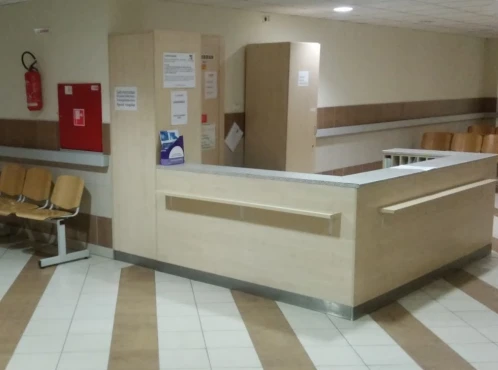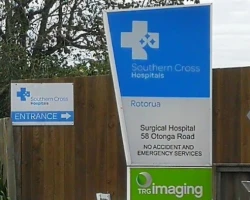Understanding Esophageal Stricture Disease: A Comprehensive Guide
This comprehensive article on Esophageal Stricture Disease offers a detailed exploration of its causes, types, symptoms, and treatment options. It underscores the significance of early diagnosis and provides practical advice for individuals to effectively manage the condition and enhance their overall quality of life.
Introduction
The human esophagus, a muscular tube connecting the throat to the stomach, plays a vital role in our daily lives, allowing us to swallow food and liquids effortlessly. However, when this crucial pathway encounters obstacles, it can lead to discomfort, pain, and even severe health complications. One such impediment that affects individuals around the world is Esophageal Stricture Disease.
Definition and Overview
The esophagus, often referred to as the food pipe, is a hollow organ composed of smooth muscles that facilitate the transport of food from the mouth to the stomach through a series of coordinated contractions known as peristalsis. Its role is fundamental to digestion, enabling the passage of nourishment for absorption in the digestive tract. However, when the esophagus narrows or becomes obstructed, it gives rise to a condition known as Esophageal Stricture.
Esophageal Stricture Disease is a medical term used to describe the abnormal narrowing of the esophageal lumen, the inner space through which food and liquids flow. This constriction interferes with the smooth passage of ingested substances, leading to symptoms like difficulty swallowing, pain, and discomfort. While it may appear as a relatively benign ailment, esophageal strictures can cause considerable distress and negatively impact an individual's quality of life.
Importance of Esophagus
The esophagus, often overshadowed by its neighboring digestive organs, is a linchpin in the gastrointestinal system. Its primary function is to ensure that ingested food and liquids travel from the mouth to the stomach without interruption. This simple yet critical task is essential for proper digestion and nutrient absorption.
Imagine a scenario where every bite of food or sip of liquid you take encounters resistance and pain as it attempts to traverse the esophagus. This is the reality faced by those afflicted with Esophageal Stricture Disease. The importance of a healthy esophagus becomes glaringly evident when its normal function is compromised.
Esophageal Stricture Defined
Esophageal Stricture, as the name suggests, involves the narrowing or stricture of the esophageal passageway. This constriction can occur at any point along the length of the esophagus, from the upper throat to the lower esophageal sphincter, where the esophagus meets the stomach. It is often the result of underlying conditions or factors that lead to tissue damage, inflammation, and scarring within the esophagus.
Prevalence and Incidence
Esophageal Stricture Disease is not a rare occurrence; rather, it affects a significant number of individuals worldwide. The prevalence and incidence of this condition can vary based on geographical location, risk factors, and population demographics.
In developed countries, it is frequently associated with gastroesophageal reflux disease (GERD) and the chronic inflammation that ensues. In contrast, in some regions, the ingestion of caustic substances, such as strong acids or alkalis, remains a primary cause of esophageal strictures. Additionally, conditions like eosinophilic esophagitis, autoimmune disorders, and radiation therapy can contribute to the development of strictures.
Causes of Esophageal Stricture
Gastroesophageal Reflux Disease (GERD)
- Mechanism: GERD, a prevalent condition characterized by the backflow of stomach acid into the esophagus, is a leading cause of Esophageal Stricture. The repeated exposure to corrosive gastric acid irritates and inflames the esophageal lining over time. This chronic irritation triggers the body's natural healing response, resulting in the formation of scar tissue that narrows the esophagus;
- Chronic Inflammation: The persistent inflammation caused by GERD not only contributes to stricture formation but can also lead to other complications, including Barrett's esophagus, a pre-cancerous condition.
Eosinophilic Esophagitis
- Immune Response: Eosinophilic Esophagitis is an allergic inflammatory condition of the esophagus characterized by the accumulation of immune cells called eosinophils. These cells release inflammatory chemicals that damage the esophageal tissue, leading to fibrosis and stricture formation;
- Allergic Triggers: Allergies to certain foods or environmental factors can trigger Eosinophilic Esophagitis, making it more common in individuals with known allergies or atopic conditions.
Ingestion of Caustic Substances
Ingesting corrosive substances such as strong acids or alkalis can have immediate and severe consequences for the esophagus. These substances cause chemical burns and tissue damage upon contact, leading to the rapid formation of strictures as the body attempts to heal the injured area.
Radiation Therapy
Patients who undergo radiation therapy for conditions like esophageal cancer or lung cancer may develop radiation-induced esophageal strictures. The radiation damages both cancerous and healthy tissue, and scarring can occur as a result of the healing process.
Surgical Interventions
Certain surgical procedures involving the esophagus can inadvertently lead to stricture formation. This is particularly true if there is anastomosis, the surgical joining of two portions of the esophagus or the esophagus to the stomach, which may narrow over time.
Systemic Diseases (e.g., Scleroderma)
Underlying systemic diseases like scleroderma, an autoimmune disorder characterized by the hardening and tightening of connective tissues, can affect the esophagus. The abnormal collagen production seen in scleroderma can lead to fibrosis and stricture development.
Types of Esophageal Stricture
Peptic Stricture
- From GERD: Peptic strictures are the most common type of esophageal stricture and are directly related to chronic gastroesophageal reflux disease (GERD). The continuous exposure of the esophagus to stomach acid leads to inflammation and damage, resulting in scar tissue formation. Over time, this scarring can narrow the esophagus, causing dysphagia (difficulty swallowing);
- Ulcer Formation: In some cases, peptic strictures can develop from ulceration within the esophagus. Ulcers are open sores that can result from the irritation caused by acid reflux, and when they heal, they can lead to the formation of scar tissue, further constricting the esophagus.
Schatzki Ring
- Definition: A Schatzki ring is a unique form of esophageal stricture characterized by a ring-like structure that forms at the lower end of the esophagus, near the junction with the stomach;
- Diagnostic Criteria: Diagnosis of a Schatzki ring is typically made through imaging studies like barium swallow tests or endoscopy. The presence of this ring can lead to intermittent dysphagia, often when large pieces of food become lodged in the narrowed area.
Eosinophilic Esophageal Stricture
- Allergic Component: Eosinophilic Esophageal Stricture is closely linked to allergic responses in the body. The accumulation of eosinophils, a type of white blood cell, within the esophagus is a hallmark feature of this condition;
- Tissue Eosinophilia: Biopsy samples of the esophageal lining may reveal high levels of eosinophils. These immune cells release inflammatory substances, damaging the esophageal tissue and leading to fibrosis and stricture formation.
Caustic Stricture
- Types of Caustic Substances: Caustic strictures result from the ingestion of caustic or corrosive substances, such as strong acids or alkalis. These substances cause severe chemical burns to the esophageal lining;
- Tissue Damage and Scarring: The damage caused by caustic substances is rapid and severe. As the body attempts to heal the injured tissue, it often leads to the formation of extensive scar tissue, causing significant narrowing of the esophagus.
Understanding the different types of esophageal strictures is crucial for healthcare professionals as it influences diagnosis and treatment decisions. Each type may require specific management strategies, and accurate identification is vital to providing effective care for patients with Esophageal Stricture Disease.
Symptoms and Diagnosis
Common Symptoms
- Dysphagia: Dysphagia, or difficulty swallowing, is one of the hallmark symptoms of Esophageal Stricture Disease. As the esophagus narrows due to scarring, the passage of food and liquids becomes challenging, often leading to a sensation of food getting stuck in the throat;
- Odynophagia: Odynophagia refers to the painful swallowing experienced by individuals with esophageal strictures. The act of swallowing can elicit discomfort or a sharp pain, especially when the scarred tissue encounters resistance;
- Heartburn: Chronic heartburn or acid reflux is often an early warning sign of Esophageal Stricture, particularly when it stems from conditions like GERD. The regurgitation of stomach acid into the esophagus can contribute to inflammation and stricture formation over time.
Diagnostic Methods
- Upper Endoscopy: Upper endoscopy is a commonly used diagnostic procedure for assessing esophageal strictures. A thin, flexible tube with a camera is inserted through the mouth to visualize the esophagus directly. This allows healthcare professionals to identify the location and severity of strictures and any associated abnormalities.
- Barium Swallow Test: The barium swallow test involves swallowing a contrast material (barium) while X-ray images are taken. This test helps visualize the esophagus's shape and detect narrow or constricted areas, including Schatzki rings.
- Biopsy: In cases where the underlying cause of the stricture is unclear or there are concerns about conditions like eosinophilic esophagitis or cancer, a biopsy may be performed. During this procedure, small tissue samples are collected from the esophageal lining for examination under a microscope.
- Imaging (CT Scan, MRI): Advanced imaging techniques such as computed tomography (CT) scans or magnetic resonance imaging (MRI) may be employed to assess the extent and location of esophageal strictures, especially when planning surgical interventions or evaluating complications.
Accurate diagnosis is essential for determining the appropriate treatment plan for individuals with Esophageal Stricture Disease. The combination of clinical symptoms and diagnostic tests allows healthcare providers to tailor their approach, addressing both the underlying cause and the stricture itself.
Treatment Options
Medical Management
- Proton Pump Inhibitors (PPIs): For cases associated with GERD, proton pump inhibitors are often prescribed. PPIs help reduce stomach acid production, alleviating irritation of the esophageal lining and preventing further damage.
- Corticosteroids: In instances of eosinophilic esophagitis, corticosteroids may be recommended. These anti-inflammatory medications help control the immune response and reduce tissue inflammation.
Dilation Procedures
- Endoscopic Dilation: Endoscopic dilation is a common method used to treat esophageal strictures. During this procedure, a thin, flexible tube with a balloon or dilating device at its tip is inserted through the mouth and into the esophagus. The balloon is then inflated to stretch and widen the narrowed area. This minimally invasive approach can provide immediate relief and improve swallowing function.
- Balloon Dilation: Balloon dilation is a specific type of endoscopic dilation that uses a balloon to gently expand the narrowed section of the esophagus. It is effective for various types of strictures, including peptic and Schatzki ring strictures.
Surgical Intervention
- Esophageal Bypass: In cases where strictures are extensive or recurrent, surgical procedures like esophageal bypass may be considered. This involves creating an alternative route for food to bypass the narrowed segment of the esophagus, allowing it to reach the stomach more easily.
- Esophagectomy: Esophagectomy is a more extensive surgical option, often reserved for severe strictures or when cancer is present. It involves the removal of a portion or the entire esophagus, followed by reconstruction of the digestive tract to restore continuity.
Lifestyle and Dietary Modifications
- Avoiding Trigger Foods: Patients with Esophageal Stricture Disease are advised to identify and avoid foods and beverages that can exacerbate symptoms. Common triggers include spicy foods, caffeine, citrus fruits, and alcohol.
- Eating Habits: Modifying eating habits, such as eating smaller, more frequent meals and chewing food thoroughly, can help reduce the risk of food becoming stuck in the esophagus.
- Weight Management: Maintaining a healthy weight is important, as excess weight can increase pressure on the stomach and contribute to acid reflux, potentially worsening esophageal strictures.
Individualized treatment plans are crucial in managing Esophageal Stricture Disease. The chosen approach depends on factors such as the type and severity of the stricture, the underlying cause, and the patient's overall health. Healthcare professionals work closely with patients to determine the most appropriate treatment strategy, with the ultimate goal of improving swallowing function and quality of life.
Complications
While Esophageal Stricture Disease itself can pose significant challenges, it can also lead to various complications that further impact an individual's health and well-being. Understanding these potential complications is crucial for both patients and healthcare providers.
Recurrence of Stricture
Esophageal strictures can sometimes recur even after successful treatment. This recurrence may be associated with underlying conditions like GERD or eosinophilic esophagitis. Regular follow-up and ongoing management are essential to monitor and address any recurrence promptly.
Esophageal Perforation
In severe cases, untreated or inadequately managed esophageal strictures can lead to esophageal perforation, a serious and life-threatening complication. Perforation occurs when the stricture causes excessive pressure on the esophageal wall, leading to a tear or hole. This can result in the leakage of food, digestive juices, and bacteria into the chest or abdominal cavity, leading to infection and other complications.
Malnutrition and Weight Loss
Dysphagia, the difficulty swallowing associated with esophageal strictures, can lead to inadequate food intake and malnutrition. Weight loss is a common consequence, which can further weaken the body and impact overall health.
Aspiration Pneumonia
When food or liquids are not adequately cleared from the esophagus and enter the airways, it can lead to aspiration pneumonia. This condition occurs when foreign material, such as food or stomach contents, is inhaled into the lungs, resulting in lung infections and respiratory problems.
Managing and preventing these complications is an integral part of the treatment and care plan for individuals with Esophageal Stricture Disease. It underscores the importance of early diagnosis, appropriate treatment, and ongoing medical supervision to minimize the risks associated with this condition.
Prognosis and Follow-Up
Understanding the prognosis and the necessity for regular follow-up care is crucial for individuals living with Esophageal Stricture Disease. While this condition can present challenges, timely intervention and proper management can significantly improve outcomes.
Long-Term Outlook
The long-term outlook for individuals with esophageal strictures varies depending on several factors, including the underlying cause, the severity of the stricture, and the effectiveness of treatment. Many people experience substantial relief from symptoms and improved swallowing function with appropriate therapy.
For those with strictures related to GERD, the prognosis often improves with lifestyle modifications and medications that reduce acid reflux. Eosinophilic esophagitis-related strictures can be managed effectively with dietary changes and anti-inflammatory medications. In cases of extensive or recurrent strictures, surgical interventions may be necessary, with the potential for improved quality of life.
Importance of Regular Follow-Up
Regular follow-up appointments with healthcare providers are essential for individuals with Esophageal Stricture Disease. These visits serve several critical purposes:
- Monitoring for Recurrence: Regular check-ups help identify any recurrence of strictures or underlying conditions that may contribute to stricture formation.
- Adjusting Treatment: Healthcare providers can assess the effectiveness of current treatments and make adjustments as needed to optimize symptom relief and prevent complications.
- Screening for Complications: Routine follow-up allows for the early detection of potential complications, such as esophageal perforation or aspiration pneumonia, which can be promptly addressed.
- Nutritional Assessment: Monitoring weight and nutritional status is vital for individuals with dysphagia to ensure they receive adequate nourishment.
- Patient Education: Healthcare providers can educate patients about dietary and lifestyle modifications, as well as proper swallowing techniques to improve their daily lives.
In summary, proactive and regular follow-up care is essential for managing Esophageal Stricture Disease effectively and ensuring the best possible outcome for affected individuals. With the right treatment and ongoing medical supervision, many individuals can lead fulfilling lives with improved swallowing function and reduced discomfort.
Conclusion
In conclusion, Esophageal Stricture Disease is a challenging condition that affects the esophagus, the vital conduit for swallowing and digestion. While it can result from various causes, ranging from chronic acid reflux to allergic reactions and corrosive substance ingestion, the impact on individuals' lives can be significant.
Understanding the diverse causes, types, and symptoms of esophageal strictures is essential for early diagnosis and appropriate treatment. Healthcare providers play a crucial role in identifying the underlying causes, assessing the severity of strictures, and developing tailored treatment plans to address both the stricture and its contributing factors.
The treatment landscape for Esophageal Stricture Disease encompasses medical management, dilation procedures, surgical interventions, and lifestyle modifications. These approaches aim to alleviate symptoms, improve swallowing function, and prevent complications.
Patients living with esophageal strictures should actively engage in their care, adhering to prescribed treatments, dietary recommendations, and follow-up appointments. Timely medical intervention and ongoing monitoring are essential to ensure the best possible outcomes and quality of life.
While living with Esophageal Stricture Disease can present challenges, advances in medical care and treatment options offer hope for those affected. With the support of healthcare professionals and a commitment to managing the condition, individuals can strive for improved well-being and enhanced daily functioning.
As research continues and medical knowledge advances, the understanding and management of Esophageal Stricture Disease are expected to evolve, providing even better prospects for individuals dealing with this condition in the future.
